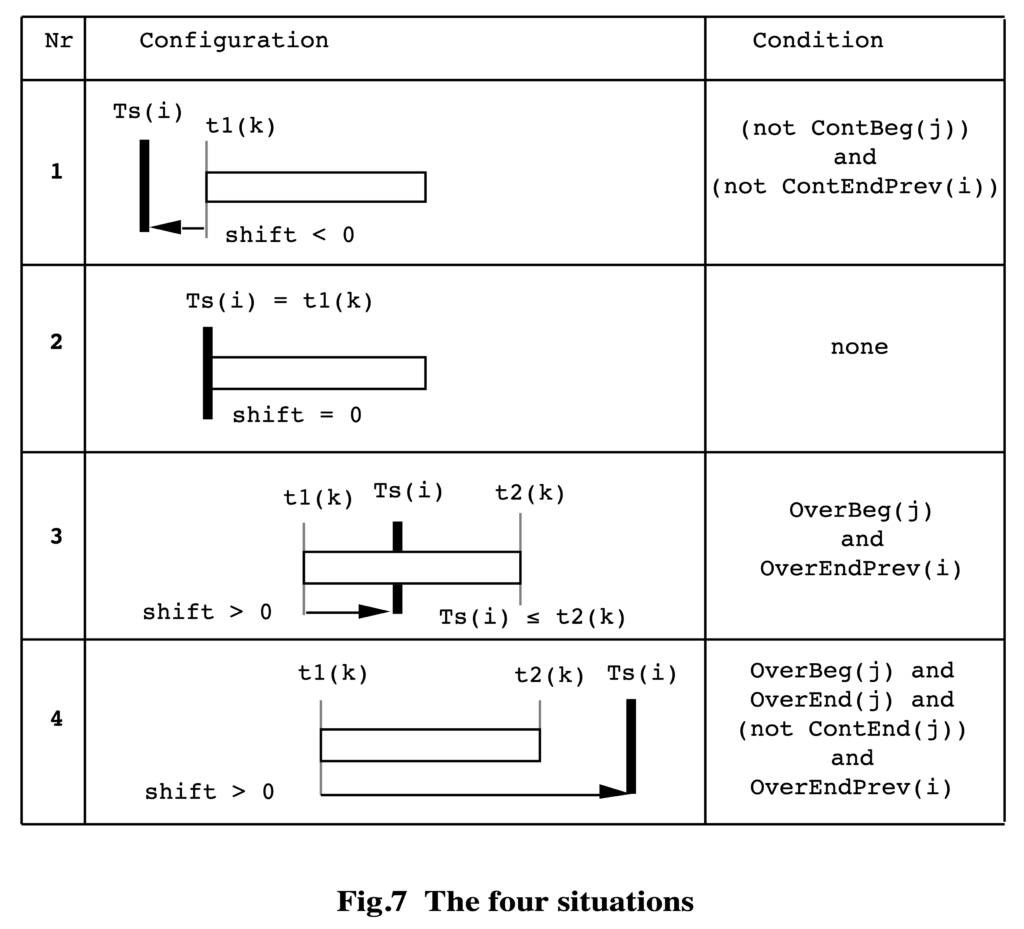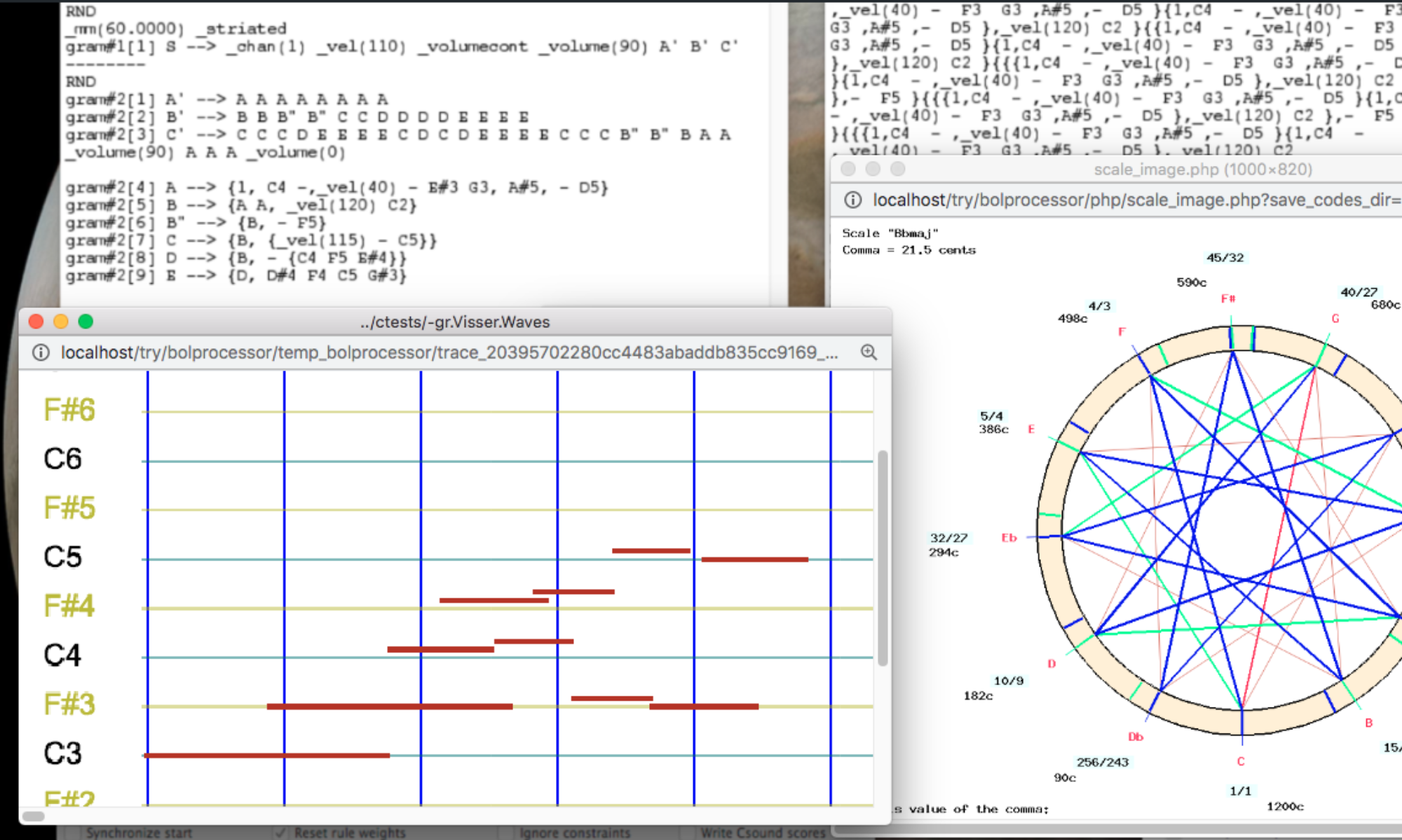Bernard Bel
Time-setting of sound-objects: a constraint-satisfaction approach. Invited paper, Workshop on Sonic Representations and Transforms. INTERNATIONAL SCHOOL FOR ADVANCED STUDIES (ISAS), Trieste, 26-30 October 1992.
Abstract
This paper deals with the scheduling of “sound-objects”, hereby meaning predefined sequences of elementary tasks in a sound processor, with each task mapped to a time-point. Given a structure of sound-objects completely ordered in a phase diagram, an “instance” of the structure may be obtained by computing the dates at which each task should be executed. Time-setting the structure amounts to solving a system of constraints depending on (1) metric and topological properties of sound-objects, (2) contexts in which they are found, and (3) parameters related to the performance itself (“smooth” or “striated” time, speed, etc.). This may require relocating/truncating objects or delaying part of the sound-object structure. A constraint-satisfaction algorithm is introduced, the time complexity of which is O(n.k) in most cases, where n is the number of sequences and k the maximum length of a sequence. In the worst case it remains better than O(n2.k3). Other fields of applications are proposed, including multimedia performance and computer-aided video editing.
Excerpts of an AI review of this paper (Academia, June 2025)
Summary of the Work

The manuscript details a computational approach to the scheduling and instantiation of “sound-objects,” which are defined as sequences of elementary tasks in a sound processor. The crux of the work is an algorithm that solves a system of constraints arising from topological and metrical properties of these sound-objects, as well as from contextual performance parameters. The algorithm balances local changes (relocation and truncation of objects) against global shifts (delays) to ensure that all constraints within sequences of sound-objects are met. In addition to musical applications, such an approach could be extended to other time-based media, including multimedia scenarios and video editing.
Core Contributions
Explicit Discussion of Time and Constraints
- The paper frames time not just as a universal metric but as a structure of discrete “time streaks” or beats. In this sense, the work bridges formal representations of time (from discrete pulses to “smooth” continuous flow) with performance-related constraints.
- The formulation of constraints (e.g., overlapping or disjoint objects) is systematically addressed through definable properties (e.g., overBeg, overEnd, truncBeg, truncEnd), which are then used in a constraint-satisfaction process.
Algorithmic Design and Complexity Analysis
- The step-by-step “Locate()” function is well described with a clear flowchart, detailing how the algorithm attempts corrections through local or global drifts, as well as partial truncations of the sound-objects.
- A worst-case time complexity of O(n²·i³) (under certain conditions) is established, yet it often performs more efficiently, showing that this method is viable for real-world musical and multimedia applications.
Applicability to Broader Contexts
While the examples focus primarily on musical objects, the paper recognizes potential applications in any setting where time-based data need to be scheduled, such as multiple-screen video editing or live multimedia performances. This generalizable framework underscores the versatility of the approach.
Strengths
- Comprehensive Motivations: The work demonstrates a solid understanding of music composition needs and how strict time-based approaches can benefit from greater flexibility.
- Thorough Explanations: The background and rationale for each component of the constraint-satisfaction process are well articulated, guiding readers step-by-step.
- Foundational for Further Development: The text provides ample conceptual and algorithmic foundations for more advanced timing algorithms, potentially inspiring other constraint-based scheduling research in music and multimedia domains.
Overall, the paper provides a structured and flexible method for representing and manipulating time-synchronized objects, showing promise not only for music composition but also for a wide variety of multimedia applications requiring coordinated playback and sequencing. The detail in constraint codification, strategies for local and global corrections, and emphasis on computational complexity will be particularly valuable to those working with large-scale or complex performance setups.
